Going to see the Terracotta Warriors is like having something like the Taj Mahal or the Great Pyramid on your bucket list for the longest time and to be able to cross it off sounds trivial but what you’re often not prepared for is just how massive and incomprehensible an ancient wonder like this actually is when you see it in person.
I’m going to try to my best to describe our first day in Xi’an and the visit to the Terracotta Warriors Museum (also known as Emperor Qin’s Mausoleum). Despite all the “ooh”s and “wow this is amazing”s, it really was our private guide, Michael, that completed the experience for us. His retelling of stories, crystal clear picture of the history and careful pointing out of little fine details made us feel like Terracotta Army pros when we finished.
Read more about China
- Where to stay in Beijing – a neighborhood guide
- Top things to do in Shanghai
- Shanghai neighbourhood guide
- Xi’an Teracotta Warriors itinerary
Want to pick up a bit of Mandarin before you go?
- Rosetta Stone Mandarin is a great online language program that simply works. I’ve used it to learn Japanese as well and it’s great at getting you right into everyday language instead of being stuck on the nuances of grammar and rules.
In This Article
A Day Visit to the Terracotta Army
The word Terracotta actually derives from an Italian word which means “baked earth”. What astounded me the most during my visit was the magnitude of Emperor Qin’s mausoleum and how each soldier had to be meticulously and uniquely crafted.
It also fascinated me how the despite the Chinese never talked to the Egyptians, both civilizations had similar ideas of the afterlife and an Emperor wanting to be buried with treasures, entertainers, officials and an entire army.
Entrance
From the parking lot there’s a 10 minute walk to the main entrance to the complex. It’s a nice stone winding path that looks recently done to improve the landscaping. Contrast this to the way out that we took which was entirely different with a bombarding of souvenir shops and restaurants.
Once in the Terracotta Warriors Museum, you really don’t see much except the buildings for Pit #1, Pit #2 and the building that houses the bronze chariots.


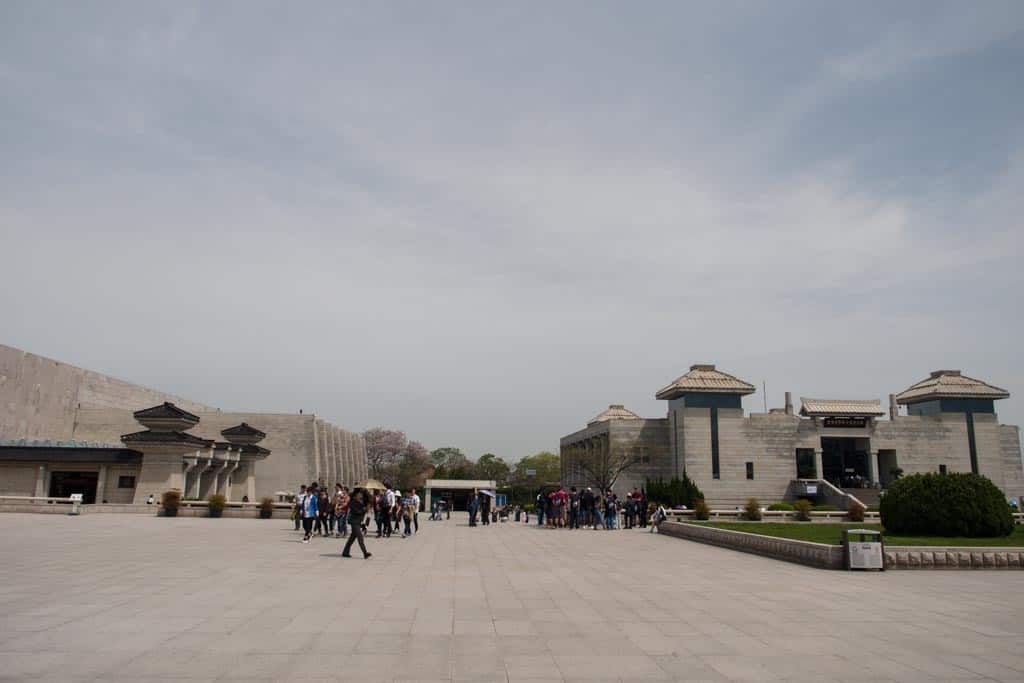
Pit #1
Cue the dramatic music. The first pit was by far the most exciting and heart-stopping of our entire tour of the museum. As the first pit to be discovered, the building that covers over it is much older but has the largest collection of terracotta warriors assembled in battle formation.
Fun facts that’ll blow you away:
- Not a single soldier was found intact in this pit.
- At the end of the Qin Dynasty, warlord Xiang Yu found out about the tomb and raided the pits for their weapons and set the area ablaze. Since the pits were protected by wooden beams across the columns, those burned to cinders and collapsed on the soldiers below.
- Every year they can only reassemble 20-30 soldiers. With a total of 6,000 warriors in this pit, it’ll take 200 years to finish it all.
- There’s paint on every single one of these soldiers to start with but because of oxidation they disappear in minutes so most of them have been left in the ground to preserve the colors. That being said, Johnson & Johnson has developed some sort of lotion that’ll help preserve the paint so they’re slowly starting to incorporate that technology in.
- Every soldier’s face is different.
- The horses of this dynasty were a lot smaller because these ones came from Mongolia. Subsequent dynasties brought on much larger stallions from outside the kingdom.
- To keep the tomb a secret, all the craftsmen that sculpted these soldiers were killed thus none of the art was passed on to later generations.
- For the longest time, farmers knew there was something in this area but were always spooked off because of superstitions.
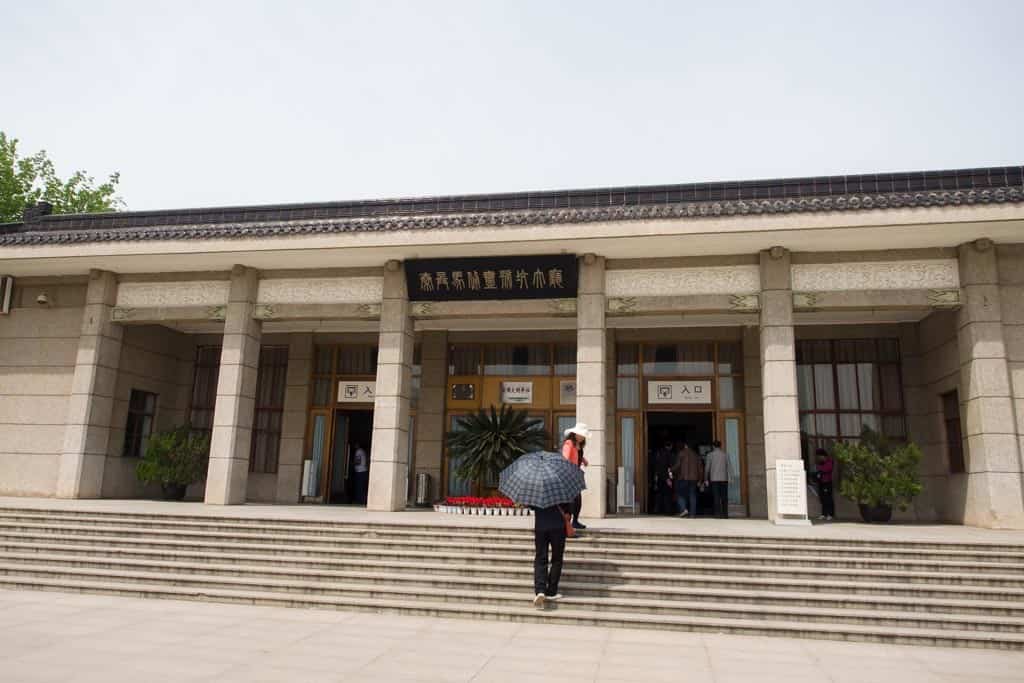
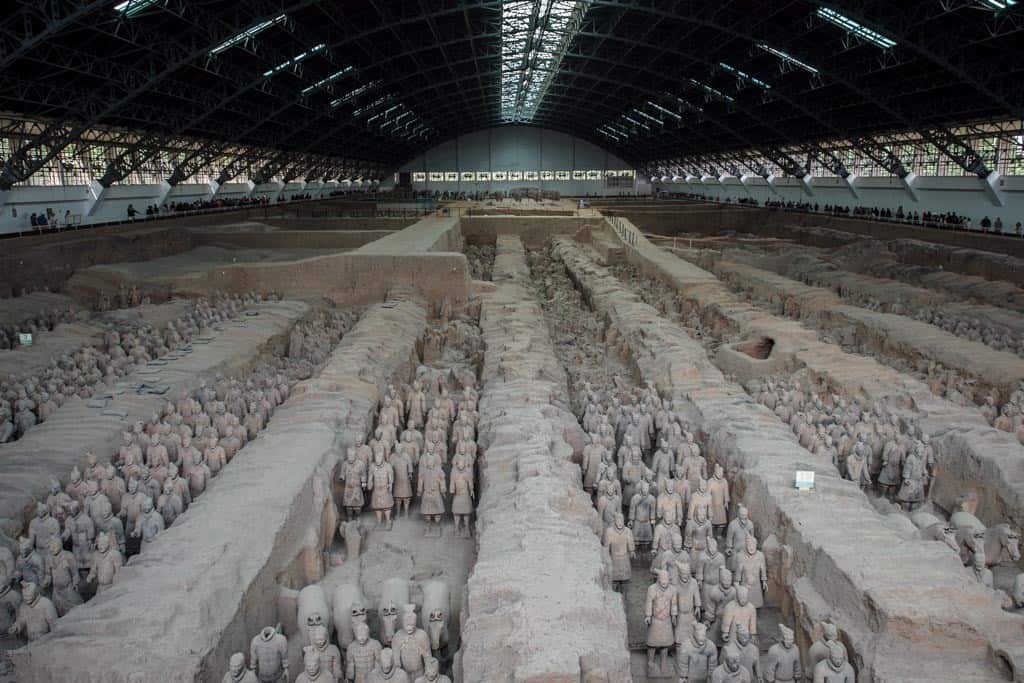
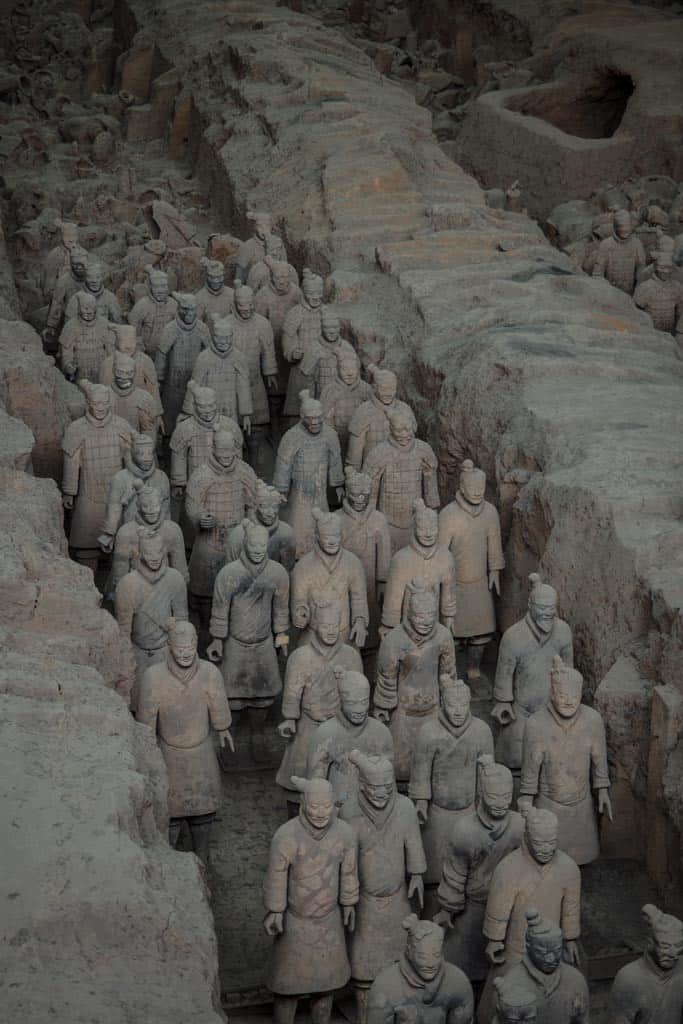
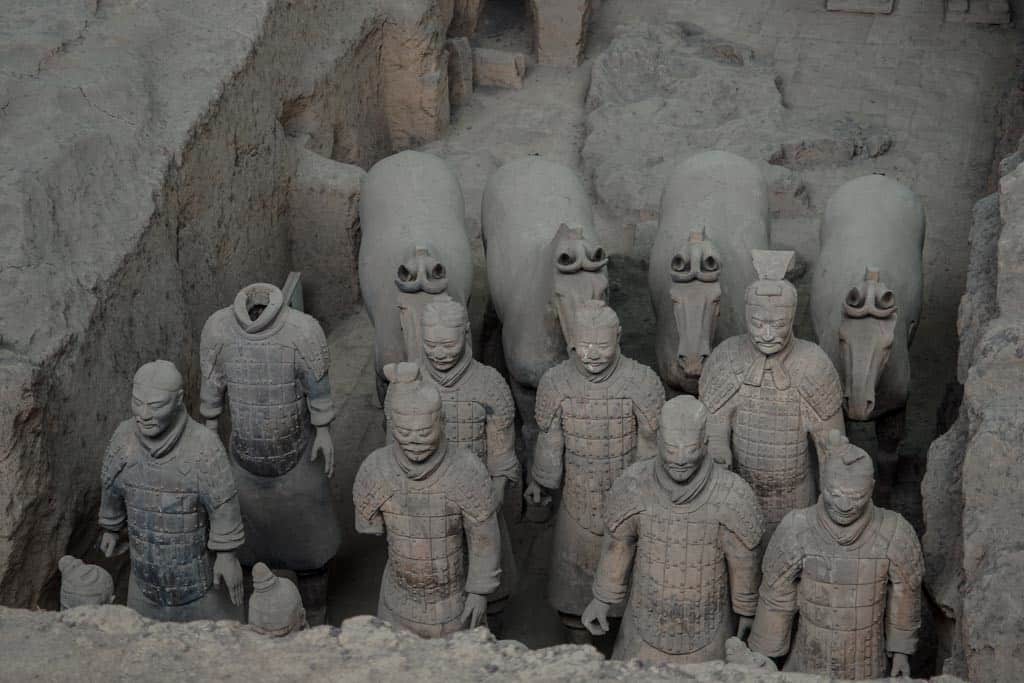
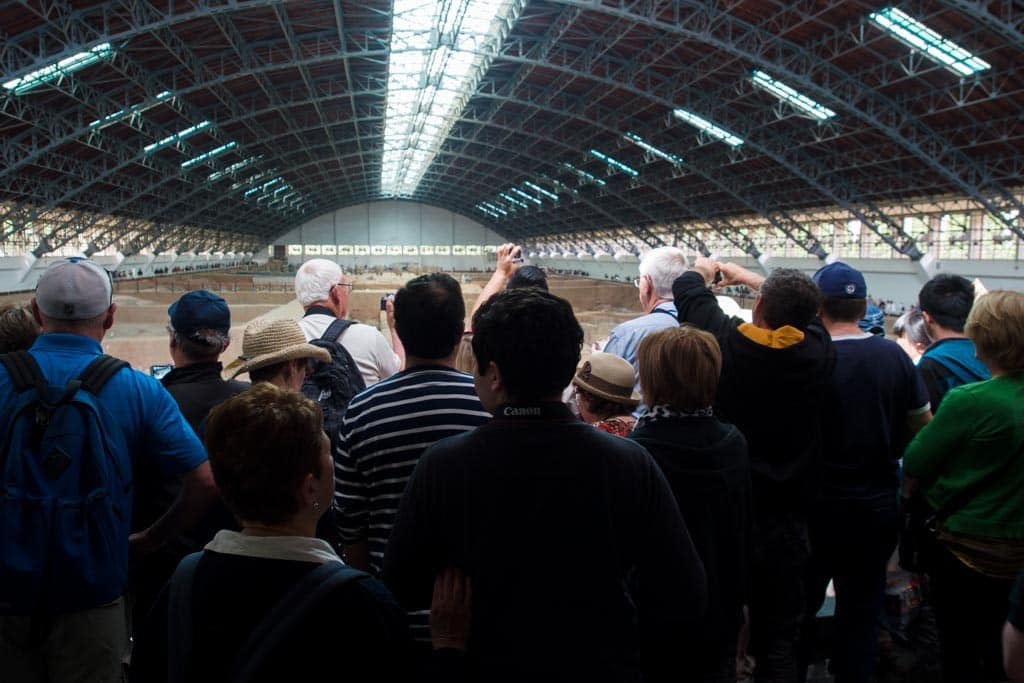

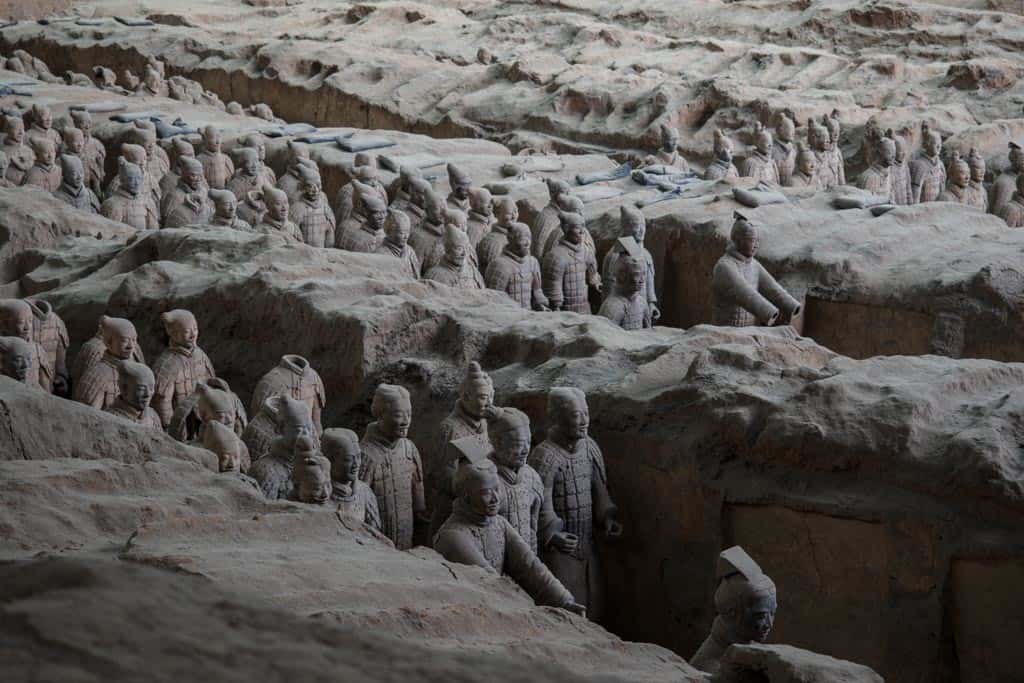
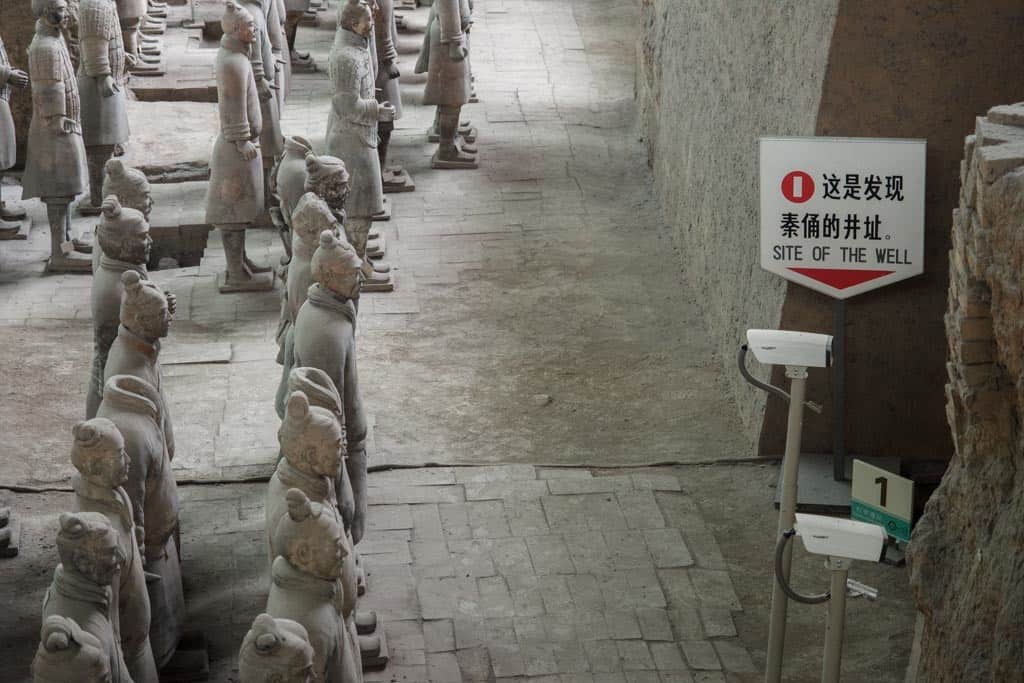
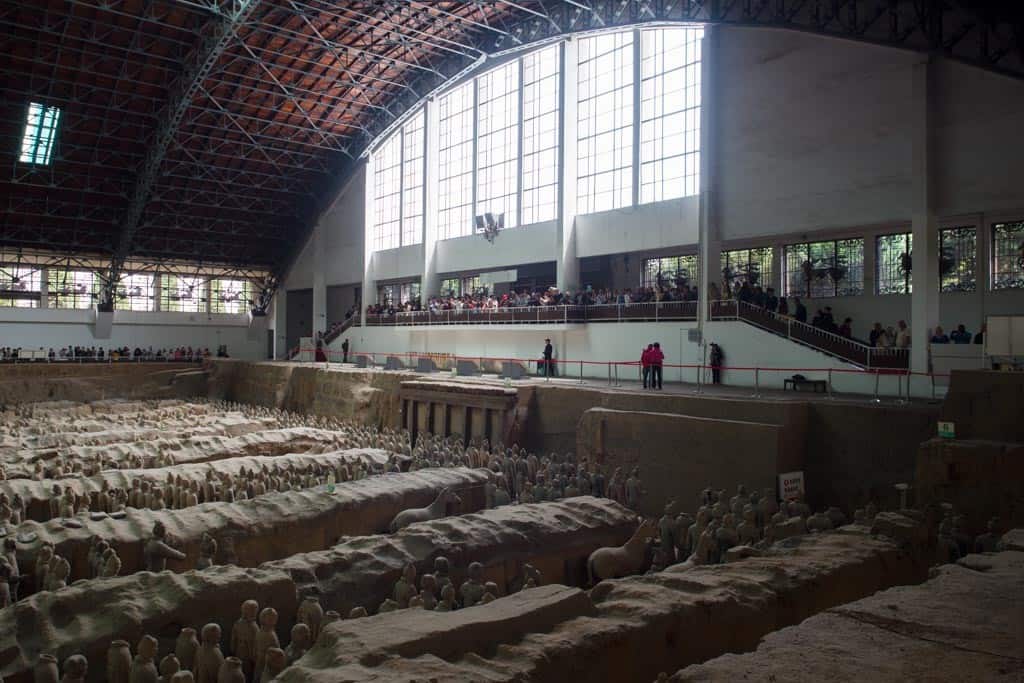
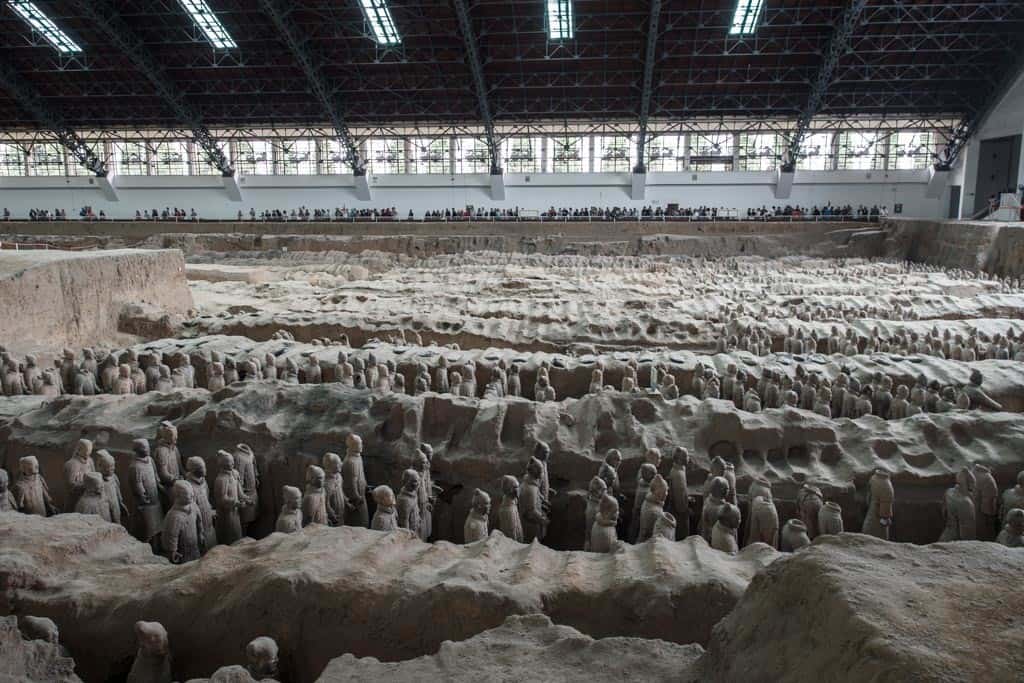
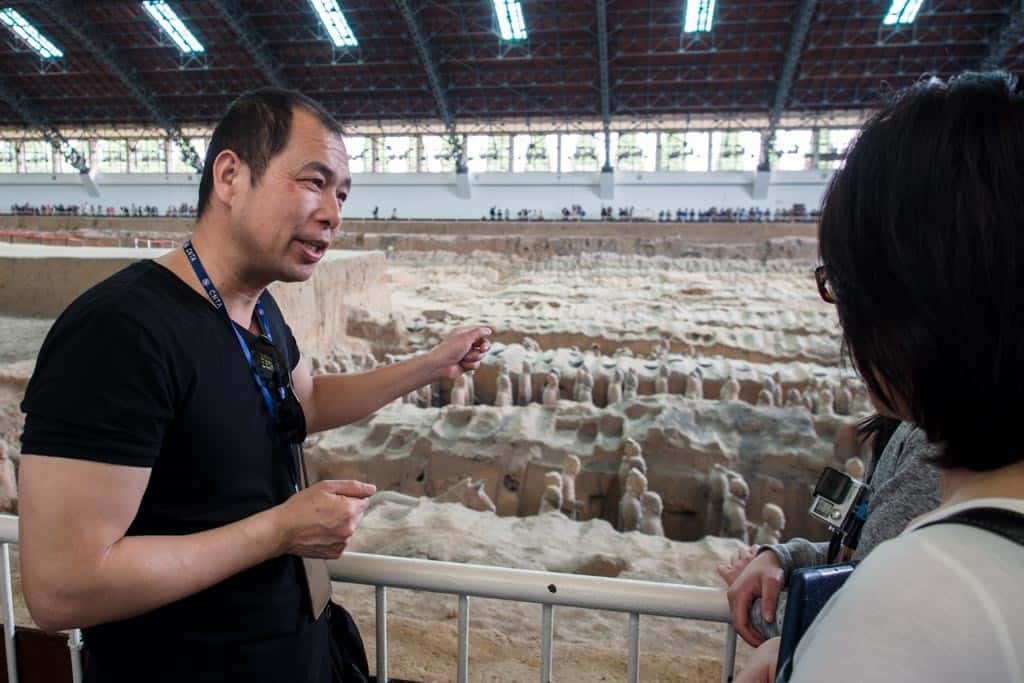
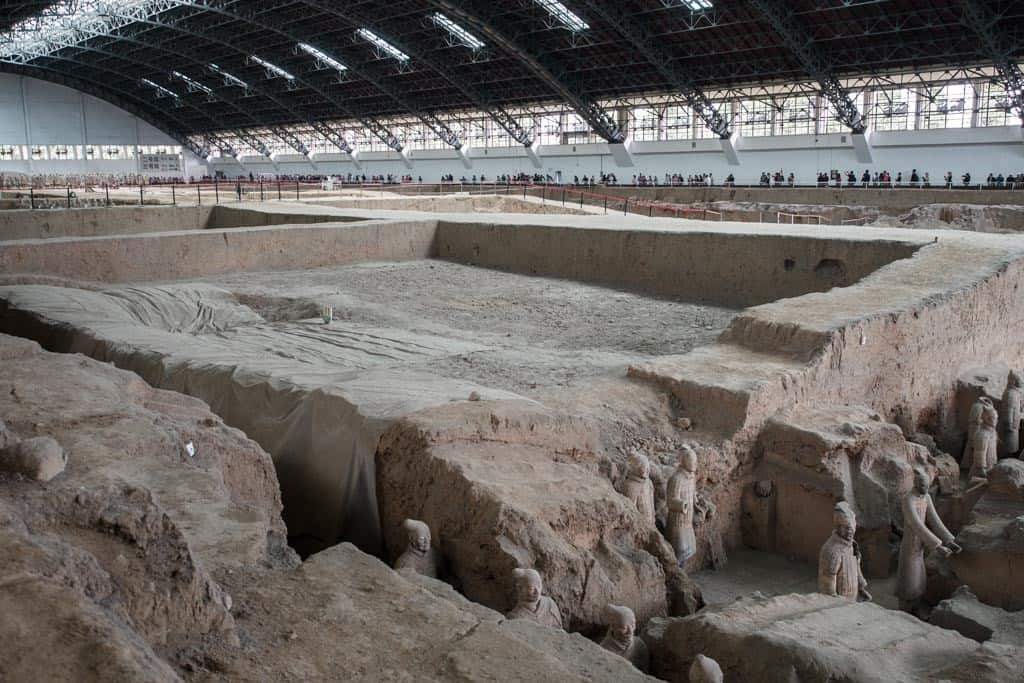
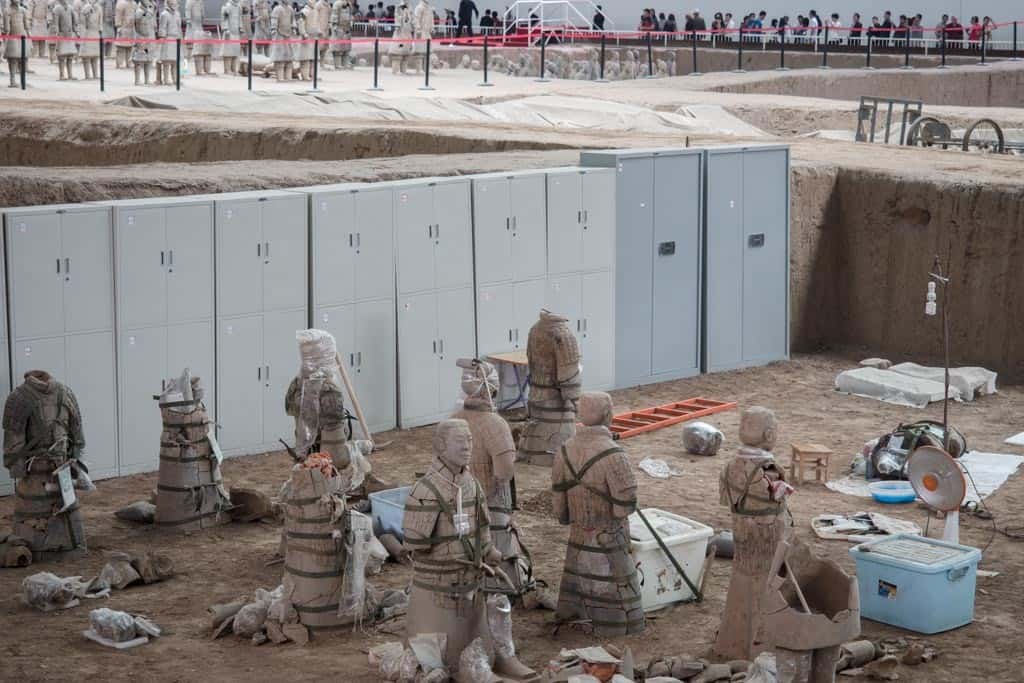
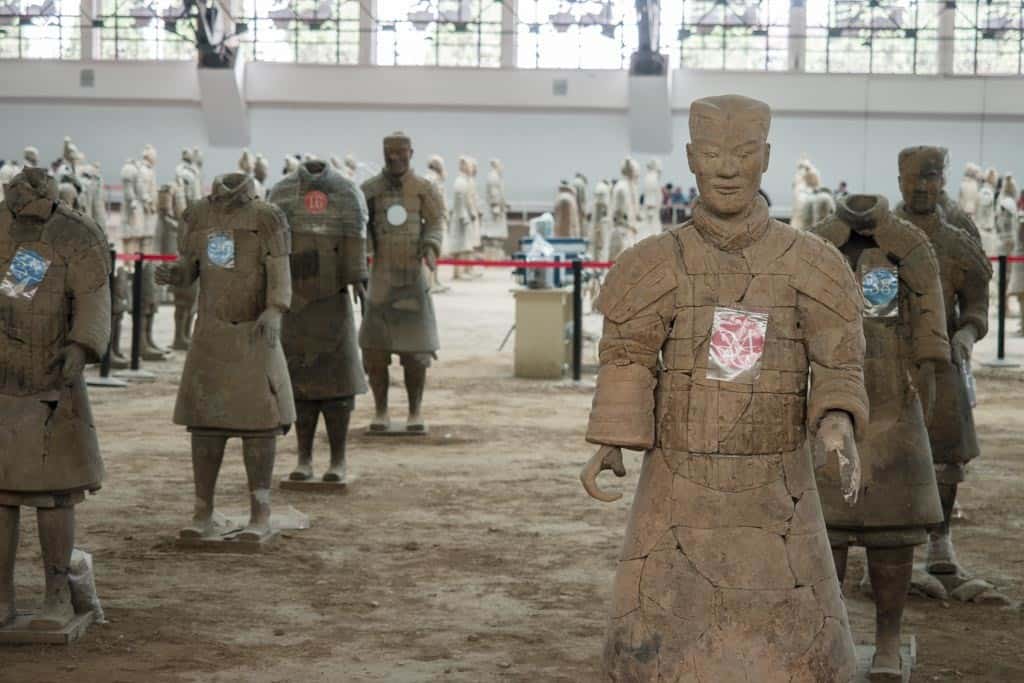
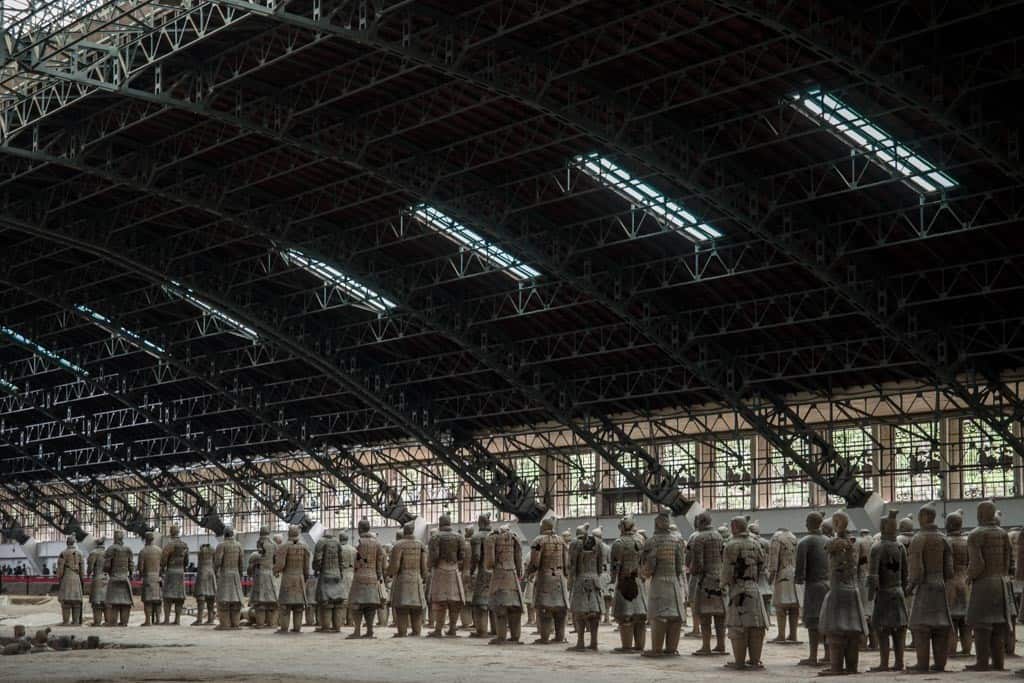
Pit #3
The back side of Pit #1 directly led us into Pit #3.
The scale of the third pit is dramatically smaller but housed in an enclosed and I would say more modern “museum-esque” facility, it was interesting to see a completely different layout. Archeologists speculate that this pit was meant to be the command headquarters for the other two pits.
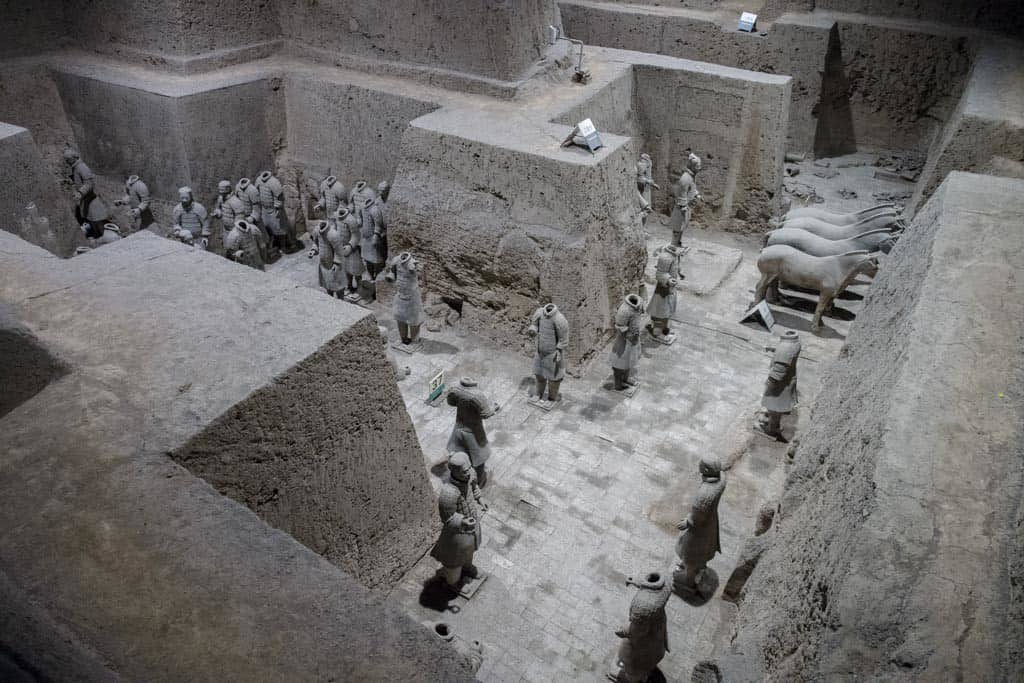
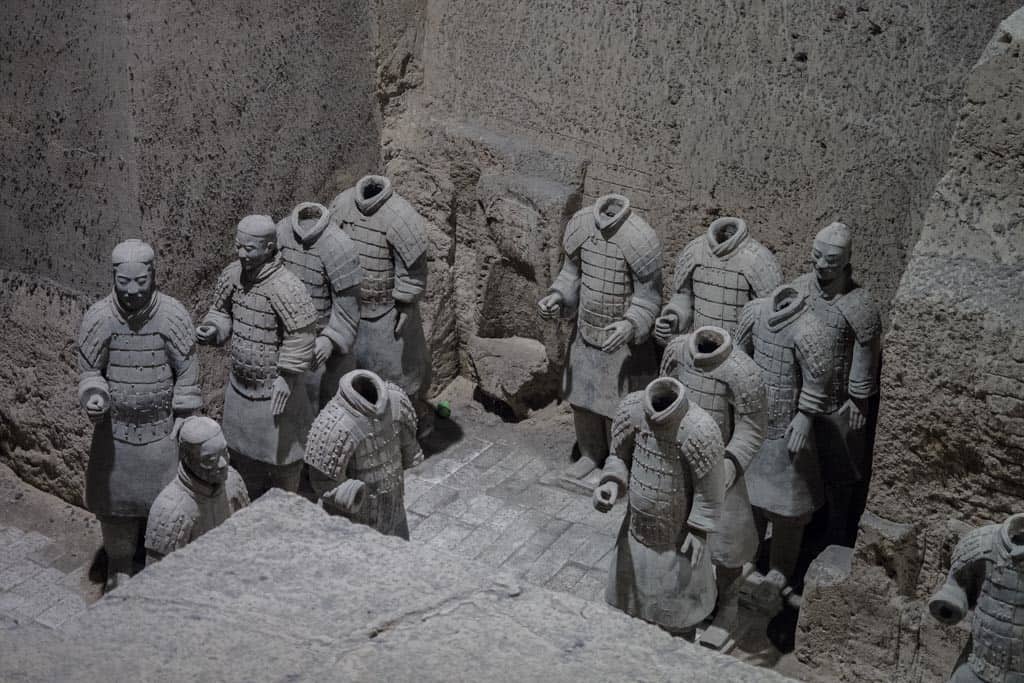
Souvenir Shop Fun
After Pit #3 we took a break and headed to the souvenir store. While we didn’t buy any of the ridiculously expensive replicas on sale, we did get to meet one famous farmer. We also had a chance to pose with our very own warriors.
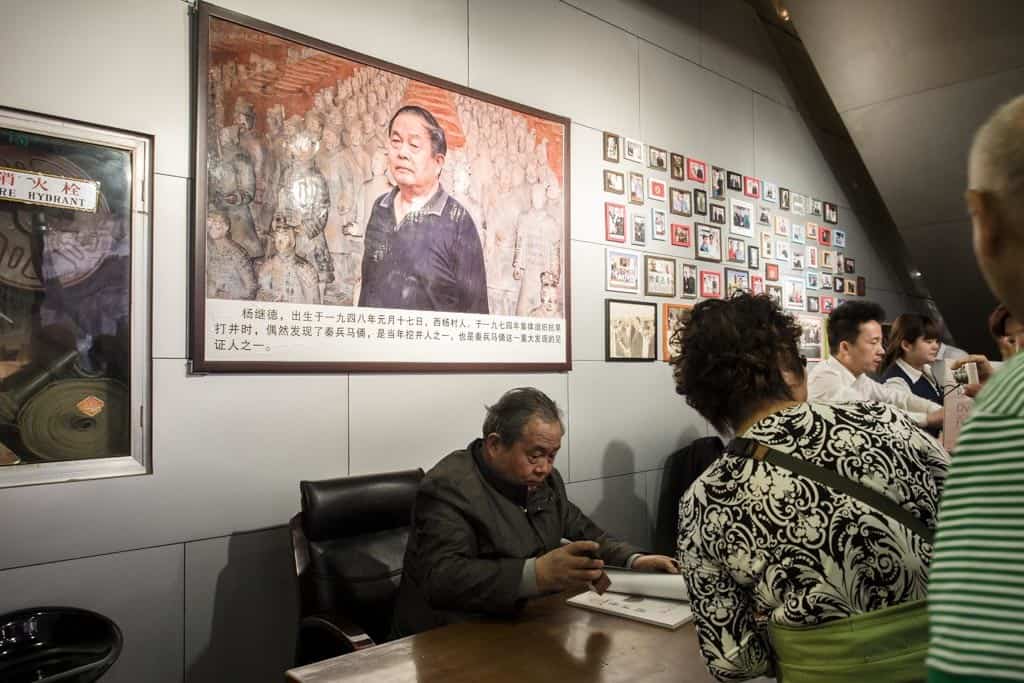
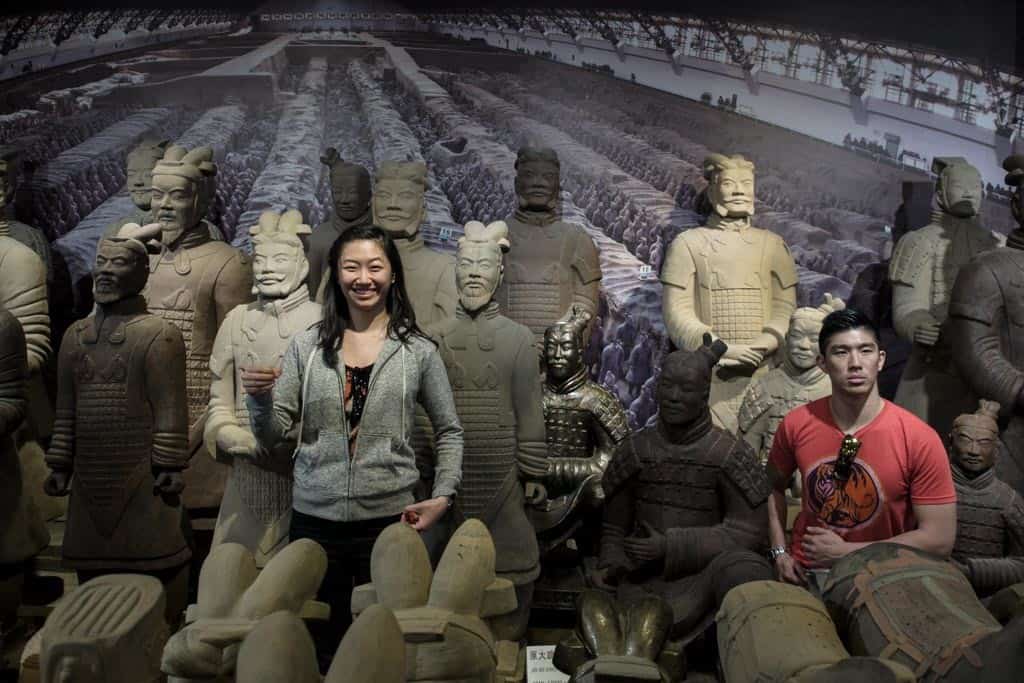
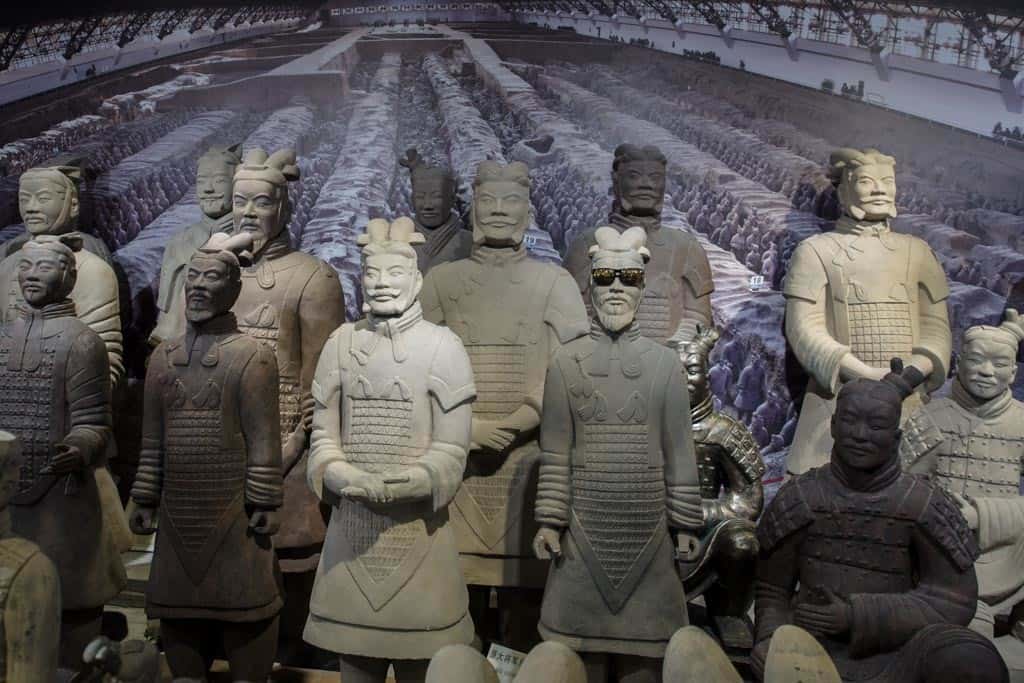
Pit #2
While Pit #2 may not rival the first one in terms of the number of combined warriors what I liked most about this one was that it gave us a closer look at the archers and their formation of one group nocking and the second group shooting. Most of the site has been left unexcavated but you get a more complete view of how the wooden beams were laid out after completion of this pit.
This being a more modern pit also has an exhibition hall where you can get up close with real samples of soldiers and weapons from the pit.
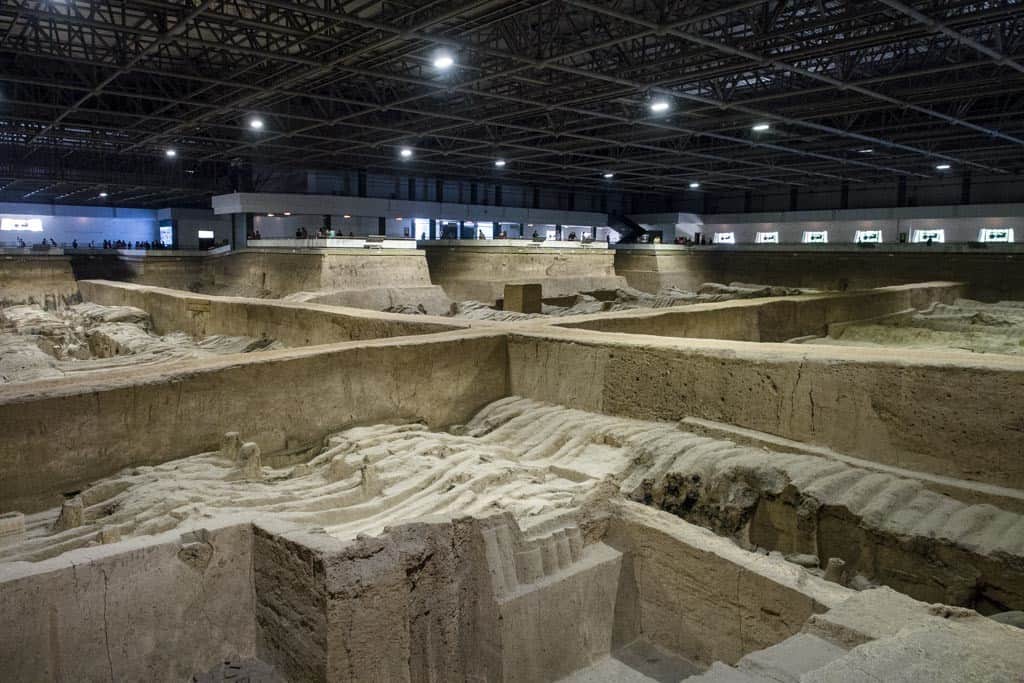
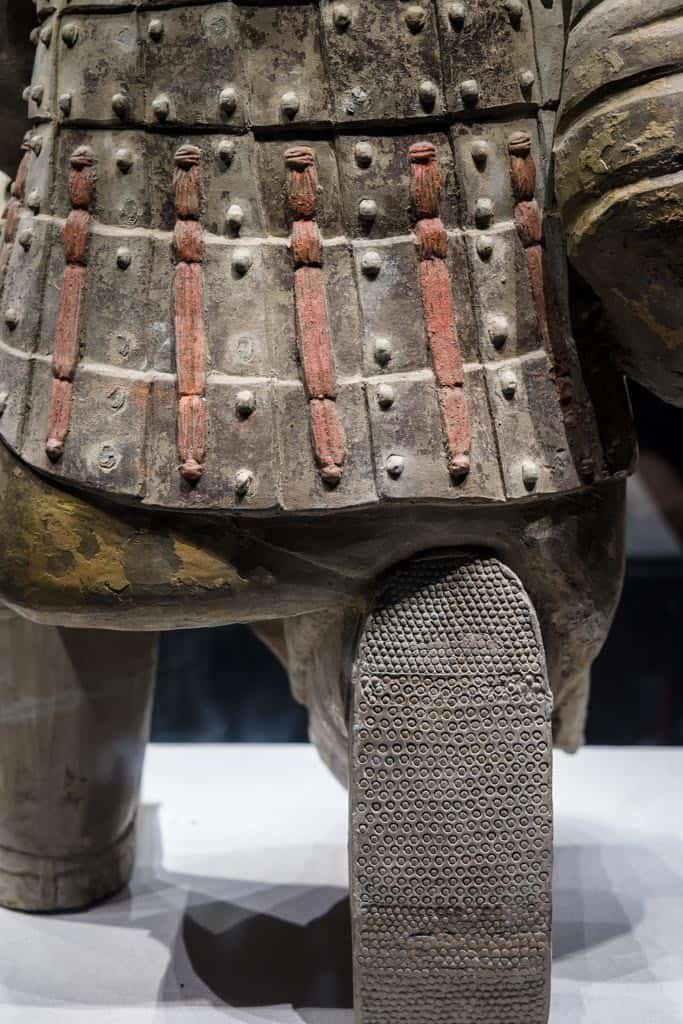
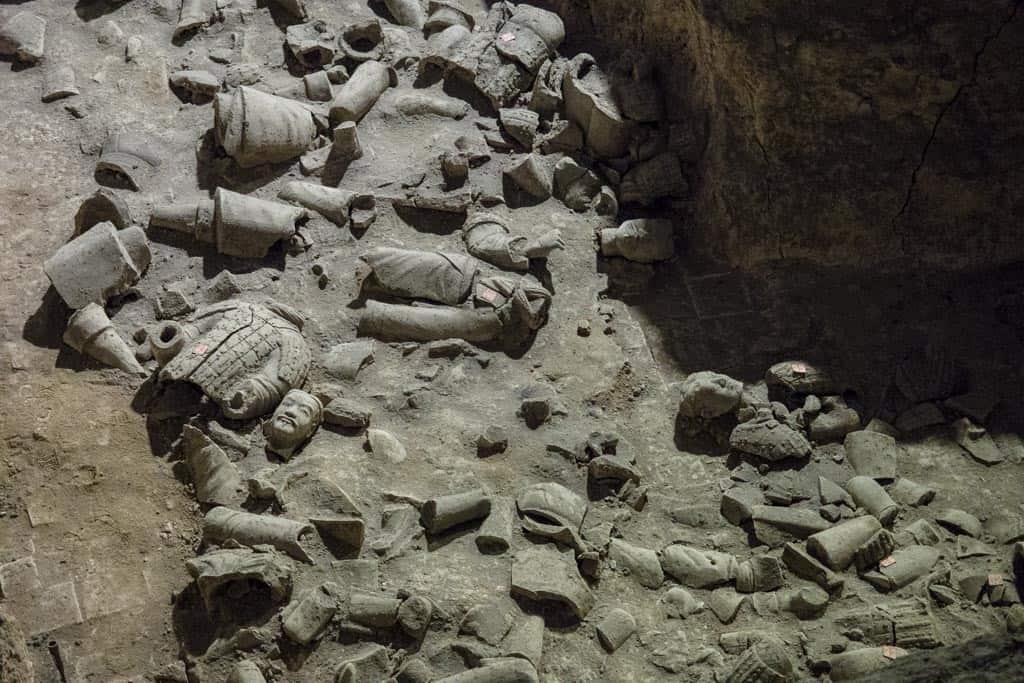
Bronze Chariots Museum
There is one large building completely dedicated to the prized bronze chariots discovered in an encased wooden box in 1980. It took two and a half years to restore them and eventually they were put on display here. There are two of them and this one below was meant to be a chariot for the Emperor’s family.
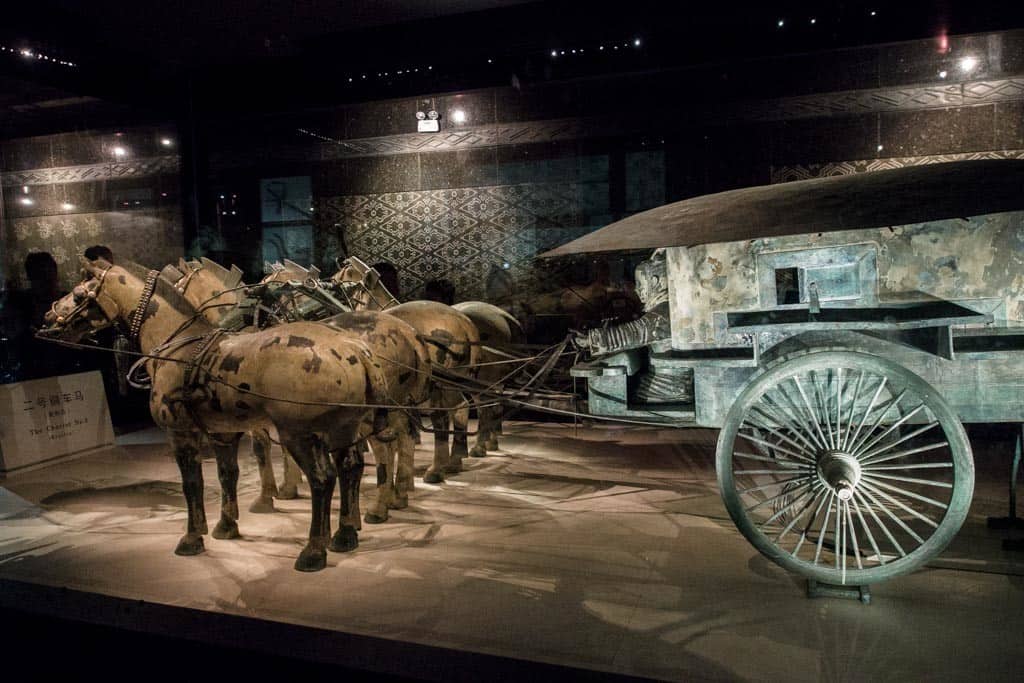
Banpo Neolithic Village and Big Wild Goose Pagoda in Xi’an
After spending a good 4 hours at the Terracotta Warriors Museum which was mostly my doing because I was SO SLOW at taking photos and video, we left at 2PM and made our way back into Xi’an to have lunch, explore the Banpo Neolithic Village and the Big Wild Goose Pagoda area.

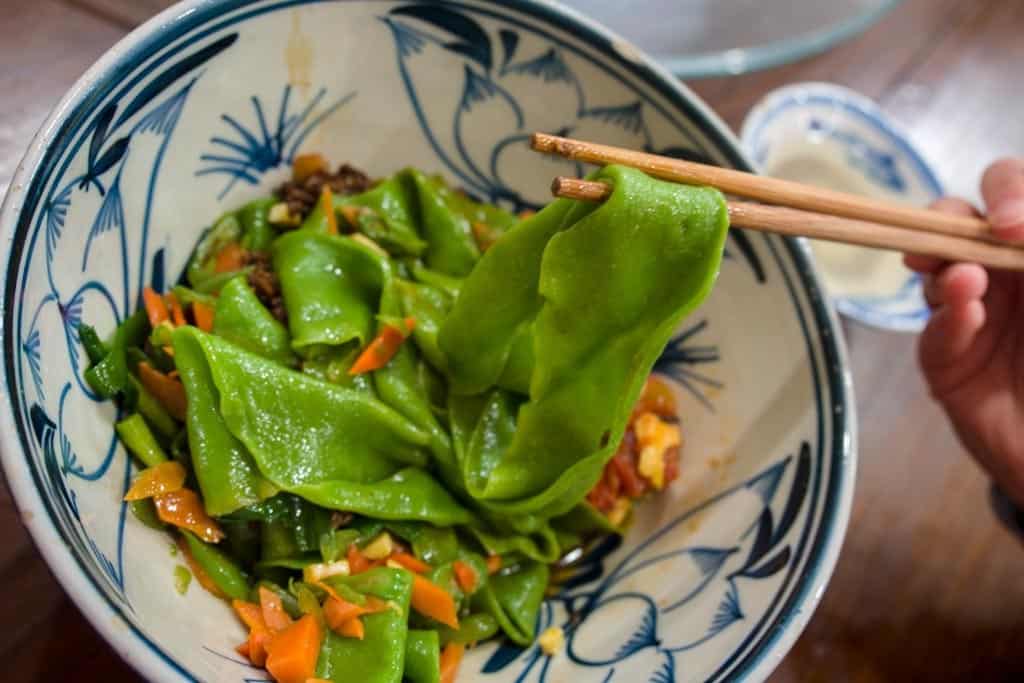
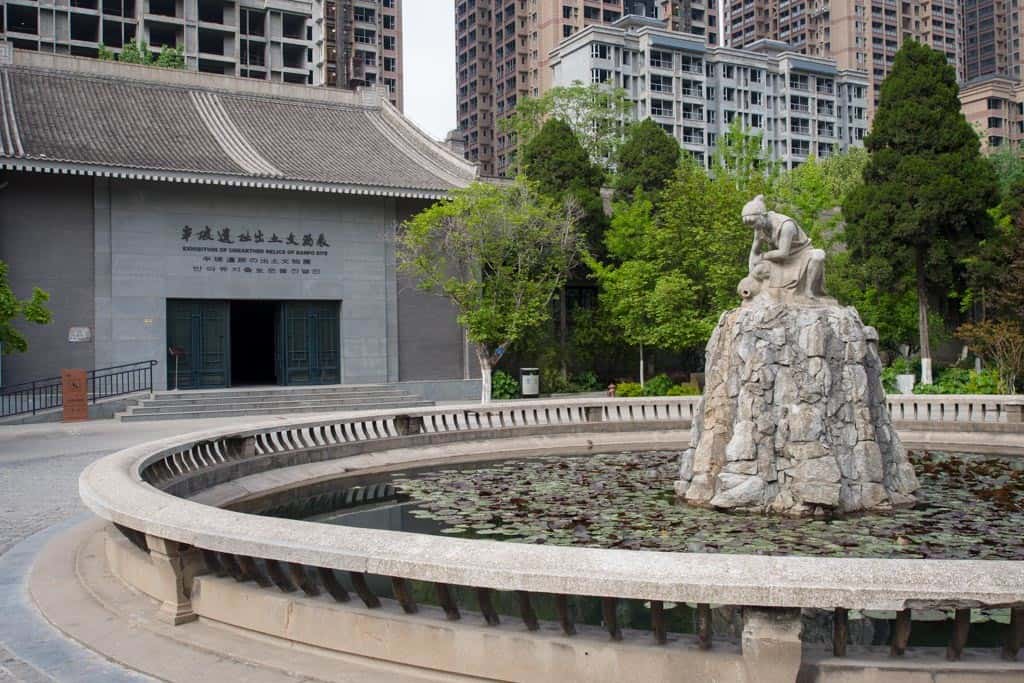
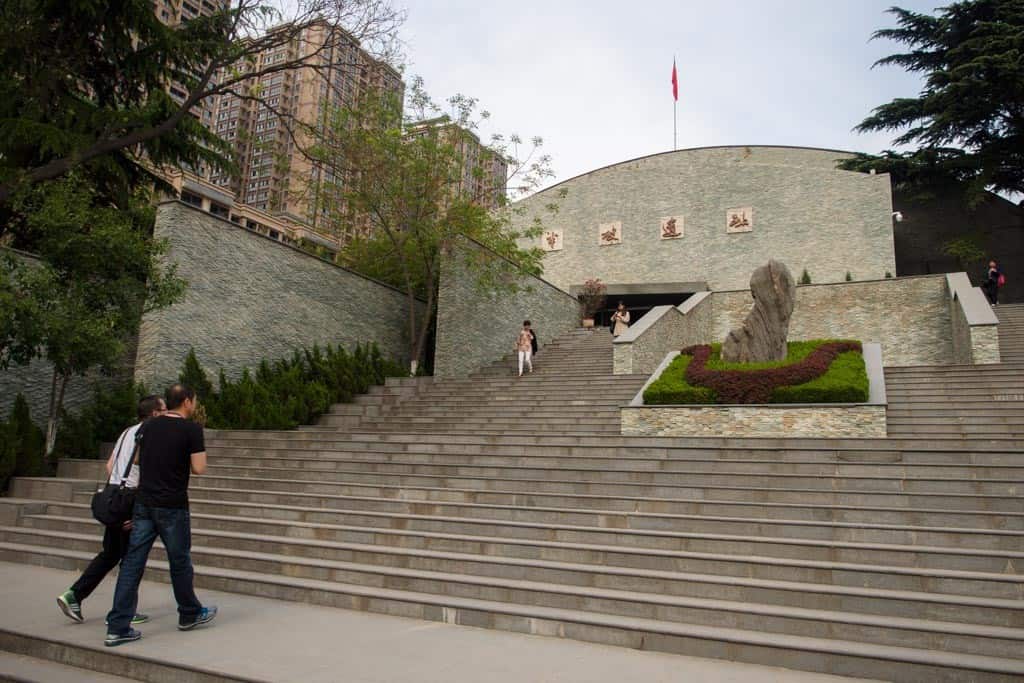
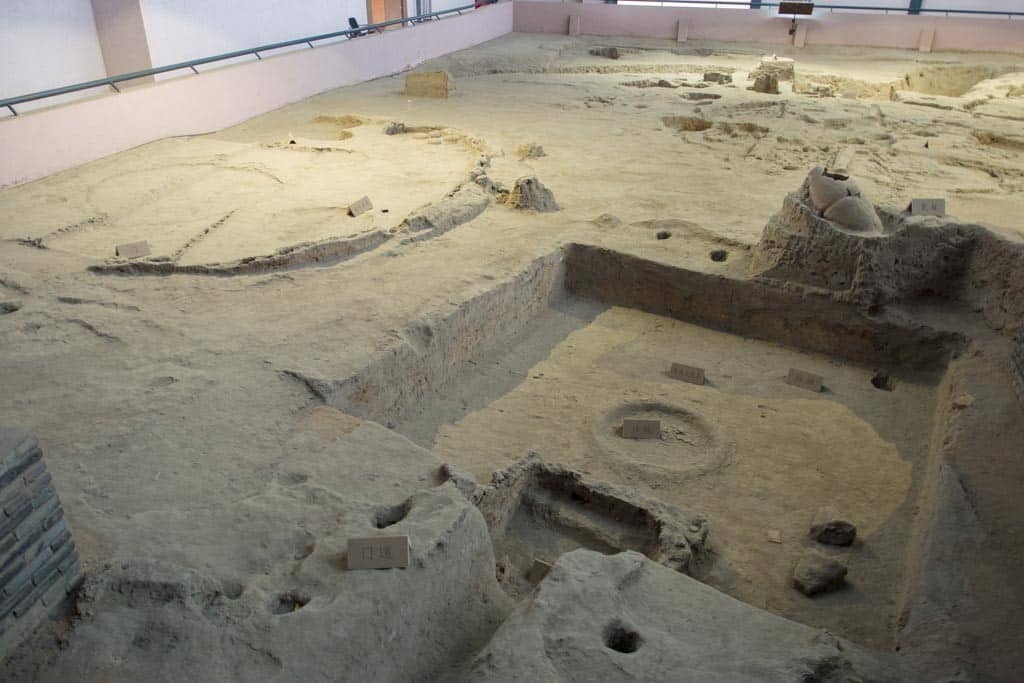
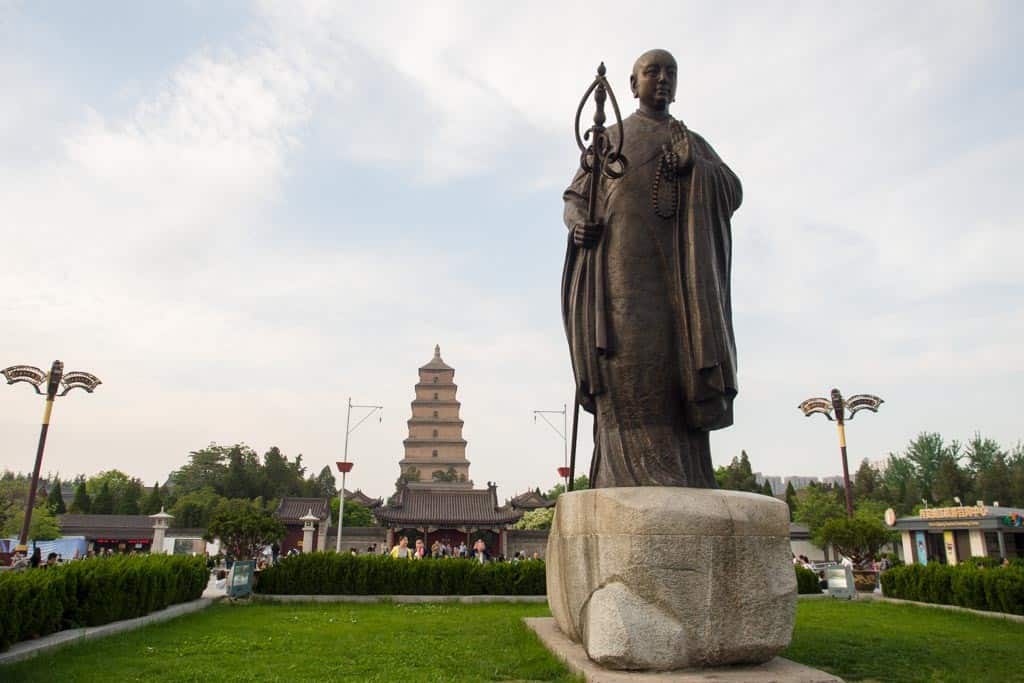
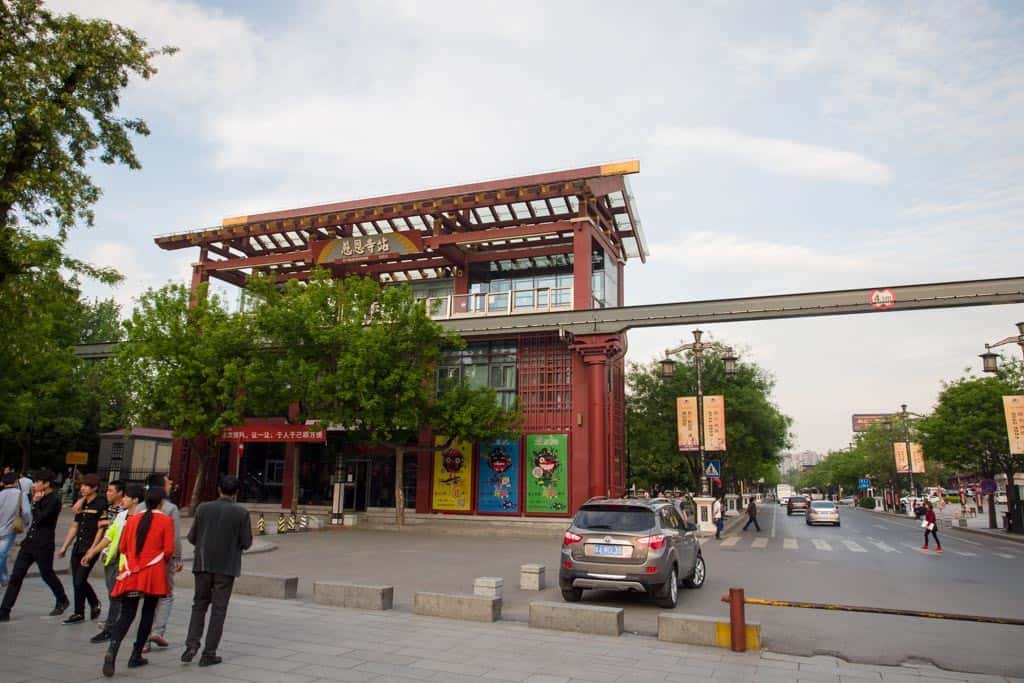
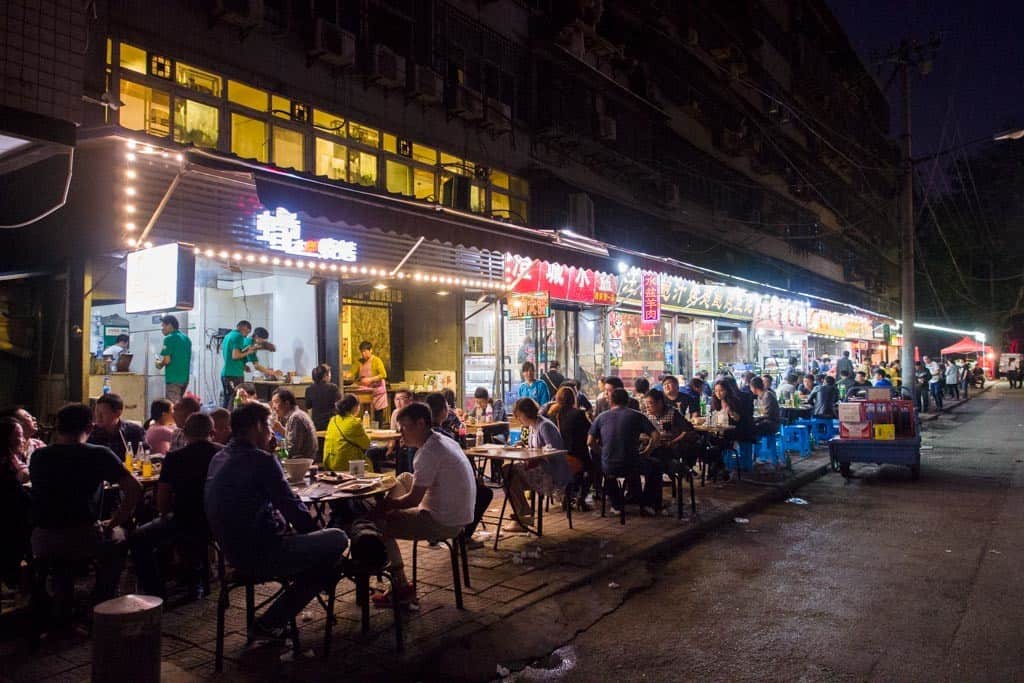
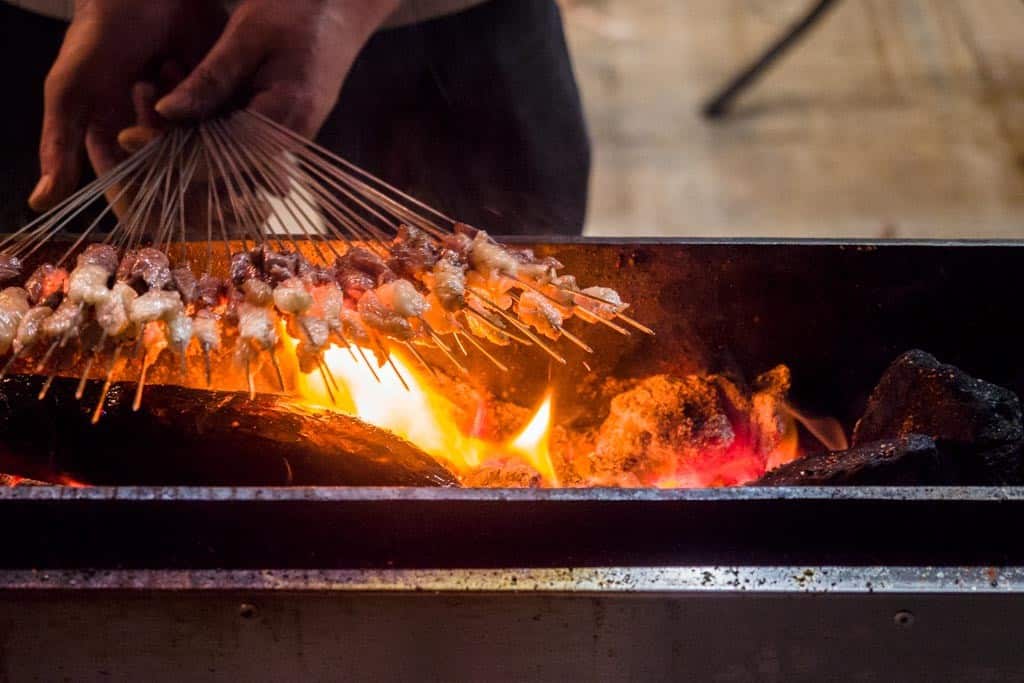
Lost In Translation
These are always fun to spot in China. The below is a sign we saw in an elevator with some interesting stick figure warning signs.
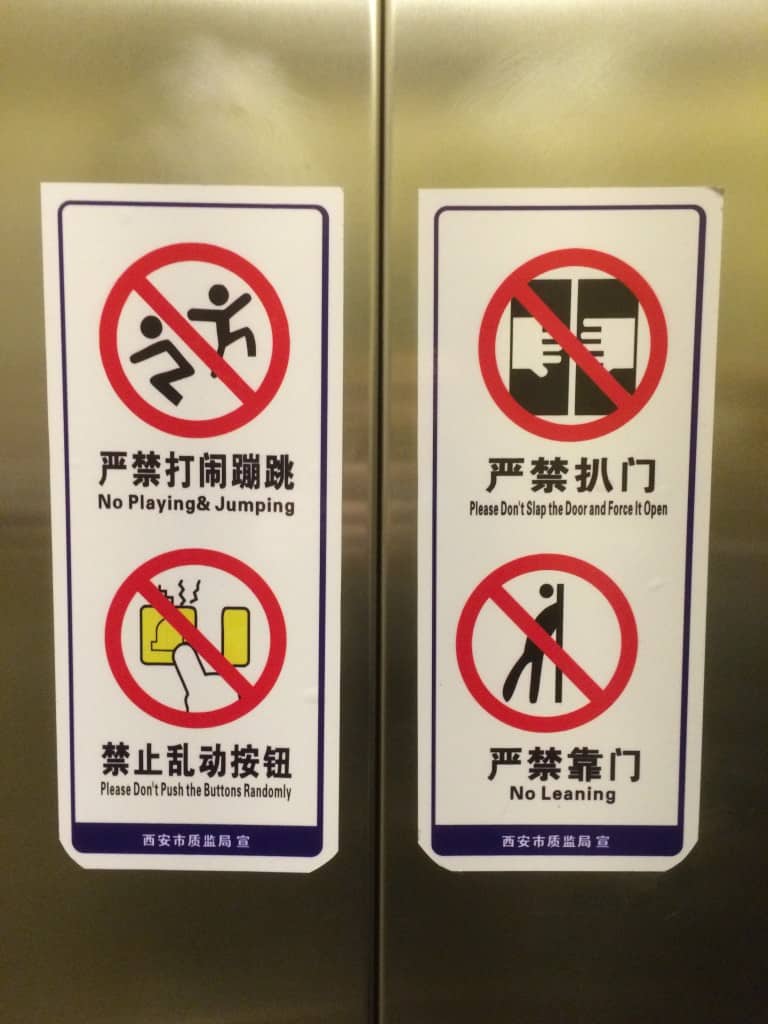
Tips for Visiting the Terracotta Army in Xi’an
- Prices
- Terracotta Warriors Museum = 150 RMB (Mar – Nov), 120 RMB (Dec – Feb)
- Banpo Neolithic Village Museum = 65 RMB (Mar – Nov), 45 RMB (Dec – Feb)
- Private Guide
- Again, I was so glad we had Michael (details can be found in our entire journey in China) to take us around. Not only was he incredible knowledgable about the history but he was also completely accommodating in our request to not do any tourist traps. In fact, he told us where to stay away from and when I wanted to buy a few magnets, he was able to tell me exactly how much they were actually worth. He was also really good with the roads so he knew all the shortcuts to help shave off time to get to and from Terracotta Warriors Museum. Michael’s English was also the best of any guide I’ve had in China.
- Terracotta Warriors Museum
- Allocate the most time at Pit #1. Pit #2 and #3 aren’t as spectacular but still worth the time to explore.
- Don’t waste time taking photos in those paid stores you find in Pits #2 and #3. Instead, head over to the souvenir store and there you’ll find a bunch of life-sized soldiers you can pose with in front of a fake background of Pit #1.
- Regarding the buying of Terracotta Warrior replicas – The prices at the museum are ridiculously high. While they do provide an actual certificate and supposedly use the same sand as the real soldiers to create the clay, I didn’t think it was worth the money. Instead, wait until you get to the Muslim Quarter back in Xi’an and do some hard bargaining there. For a medium size warrior (8″ ish), the museum was selling them for close to $50 while we got ours in the market for around $10 USD. Even in the market though, they started off at 210 RMB and we worked our way down to 80 RMB for a pair.
- Banpo Neolithic Village Museum
- We barely spent an hour here. While it was interesting to learn the history of these neolithic remains of their dwellings, it was vastly less impressive than the Terracotta Warriors. That being said, Michael said it made more sense to do this afterwards since the big tour buses will typically try to do this in the morning on their way up to Terracotta. I’ll defer to Michael’s judgement on this one.
Day Trip to Visit The Terracotta Army Itinerary
- Pick up some street vendor food outside of our hotel in the morning
- Picked up by Michael at 8:45 AM
- 1 hour journey to the district of Lintong (Usually it takes 35-40 minutes by car but took longer because of highway construction)
- Start exploring the Terracotta Warriors Museum from 10:15 AM – 2PM
- Eat lunch at a local noodle restaurant to try Biang Biang Noodles
- Banpo Neolithic Village
- Big Wild Goose Pagoda
- Dinner at a local restaurant near our hotel
- Accommodations: ibis Xi’an Bell Tower East Hotel
For more on the rest of this trip throughout China where we start in Shanghai and work our way up to Xi’an, make sure to read the full itinerary that chronicles our journey to see the Terracotta Warriors starting from Shanghai.
What you should read next